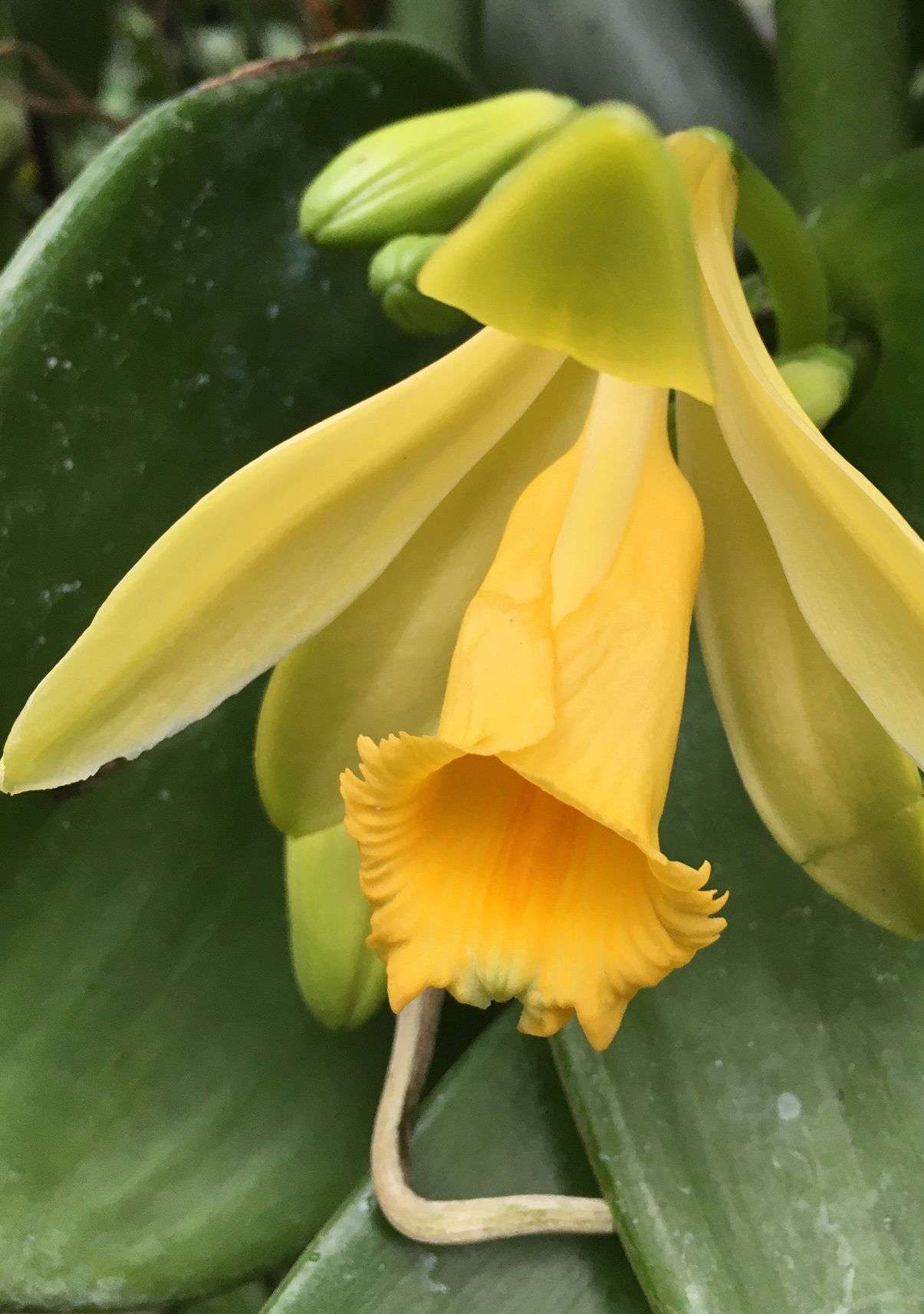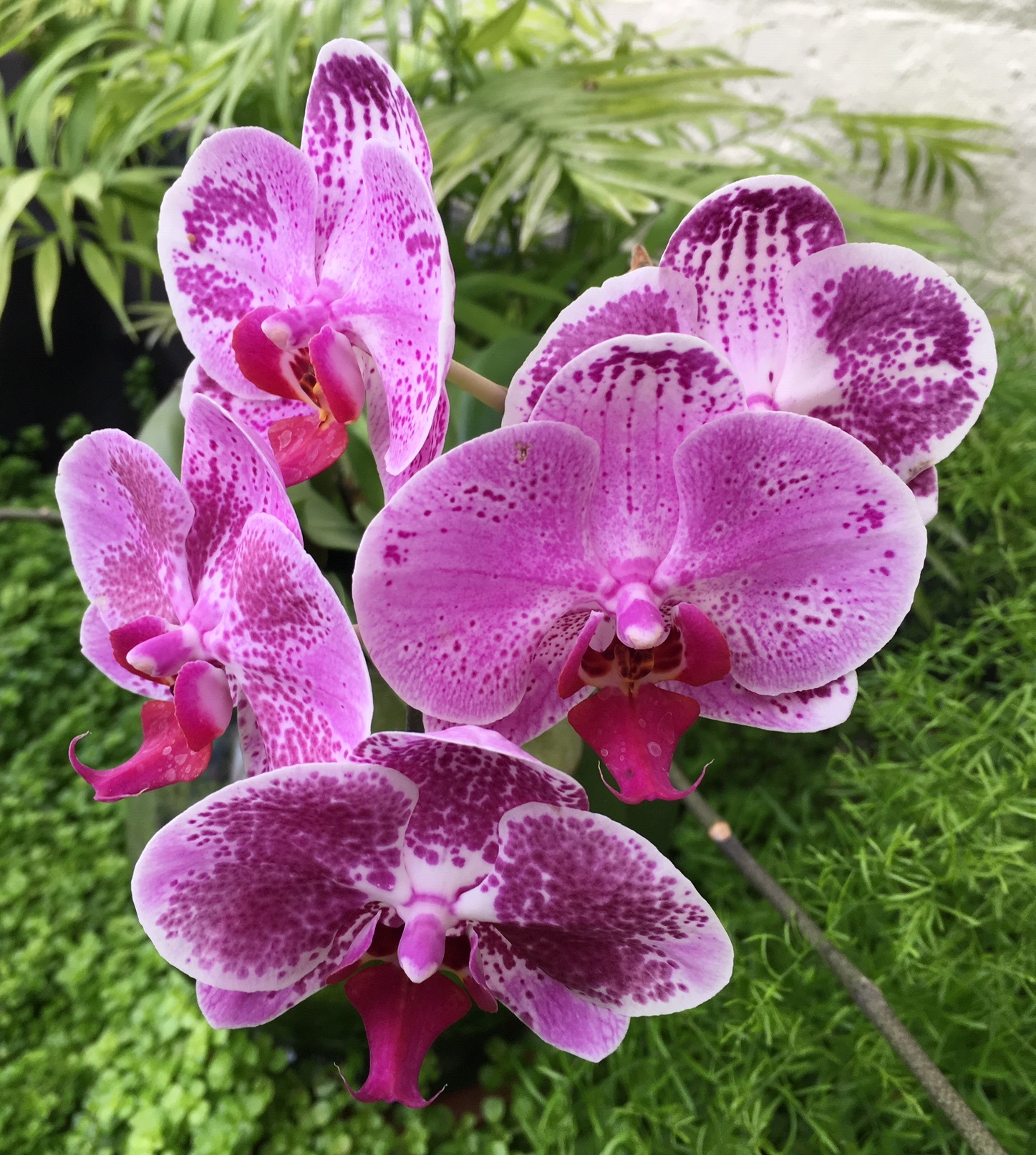
I’ve been baking, as one does at this time of year, and got a whiff of vanilla: sweet, rich, flowery. Of course, it’s the scent of a flower.
I had seen the yellow flowers of the vanilla orchid, Vanilla planifolia, just days before at the Garfield Park Conservatory in Chicago. The vine, with its broad, fleshy leaves, trailed from a high arbor like a waterfall, bedecked with yellow trumpet-shaped blooms.
Vanilla, native to Mexico, is just one of many spices and flavors that come from plants originally found around the world. Cinnamon is tree bark from Asia. Peppercorns are the berries of a vine from India. Cloves are buds from an Indonesian tree.
However, growing an orchid seems more accessible than growing a tropical tree. Even if all you have is a windowsill, you can likely grow an easy-going moth orchid (Phalaenopsis). Moth orchids thrive at room temperature in bright, indirect light with a little light fertilizing.
Nowadays, moth orchids are a common sight in flower shops and even supermarkets, each with wide-petaled flowers in white or pink or purple marching up an arching stem. They have become ubiquitous and inexpensive—and a frequent holiday gift–because they can readily be cloned through tissue culture. But they’re lovely, just the same.
However, they aren’t the only kind of orchids you can grow at home. Of the many thousands of orchid species—each evolved for a specific habitat and pollinator–several kinds do reasonably well at warm room temperature, in the 70s or low 80s.
The more difficult problem is humidity. Most orchids require a much more humid environment than the typical home, especially in winter, when the heating is on. They may need a terrarium or a humidifier of their own.
A conservatory, where you can keep all the air humid but also control ventilation, makes it easier to widen the scope of your orchid growing. You may start with the genus Cattleya, dabble in Dendrobium, and move onto the more delicate Oncidium. Sadly, most are not as fragrant as the vanilla orchid, but you might work your way up to that.
Whatever orchid you grow, its most critical need will be excellent drainage. Most of the showy orchids we grow indoors come from tropical rainforests where they are epiphytes. That means they grow not in soil on the forest floor but up in the trees, clinging with their roots to branches or crotches. They absorb the water they need from rainfall and from the humidity that always fills the air of a rainforest.
Obviously, a plant that evolved to grow high in the air doesn’t like its roots sitting in water. Far more orchids die of over-watering than under-watering.
To keep the roots free and clear, it’s critical to plant orchids in a special potting mix, usually called orchid mix, consisting of big chunks of bark. The chunks will soak up some water, but the surplus will quickly drain away between them. The coarse texture also allows plenty of air to reach the orchids’ roots.

Of course, if you get a moth orchid or other orchid as a gift wrapped in foil or plastic, remove the wrapping immediately to allow drainage.
A gift plant also may come in a decorative cachepot, without a hole, covering a plastic pot. The cachepot can trap a pond of water around the orchid’s roots, so it’s best to remove it. If you’re not willing to let the cachepot go, make sure you empty the water out after just a few minutes every time you water the orchid.
If you’re new to orchid growing, here’s a good advice website from an enthusiastic hobbyist. The American Orchid Society also provides lots of good information.
Whether it’s because of the scent of vanilla or a charming gift that brings them to mind at this time of year, dreams of orchids can dance in our heads along with visions of sugarplums.










